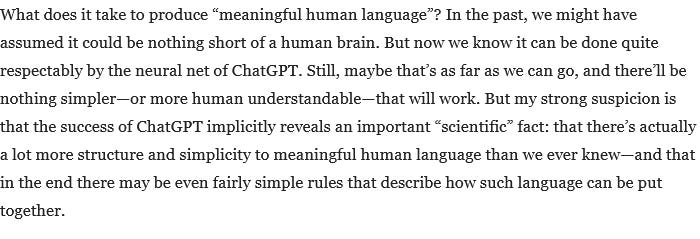ChatGPT is a large language model created by OpenAI which uses transfer learning to understand conversations. It was released in March 2021 and has already been used in various projects such as conversational agents, chatbots, and natural language processing (NLP) applications. Here are some of the key takeaways from the article:\n\n1. ChatGPT is powered by GPT-3, an advanced AI model that uses massive amounts of data to “learn” about language. Transfer learning allows it to quickly apply that knowledge to new tasks.\n\n2. ChatGPT is designed to understand conversations, not just single sentences. It uses convolutional neural networks to store information about the context, allowing it to better understand what people are saying.\n\n3. ChatGPT can be used to create natural-sounding conversations, making it useful for tasks such as customer service or creating virtual assistants.\n\n4. To maximize its performance, ChatGPT needs to be trained on data that is relevant to the task at hand. This means that developers need to provide the right training data depending on their application.\n\n5. ChatGPT has significant potential when it comes to understanding dialogue. For example, it could be used to detect sentiment, determine the meaning of words, or even generate responses.\n\nIn conclusion, ChatGPT is a powerful tool for understanding language and creating natural conversations. By leveraging the power of GPT-3 and transfer learning, it can quickly adapt to different tasks and understand conversations with greater accuracy than ever before. As more developers explore its capabilities, we will see an increasing number of applications for ChatGPT.
Read more here: External Link
